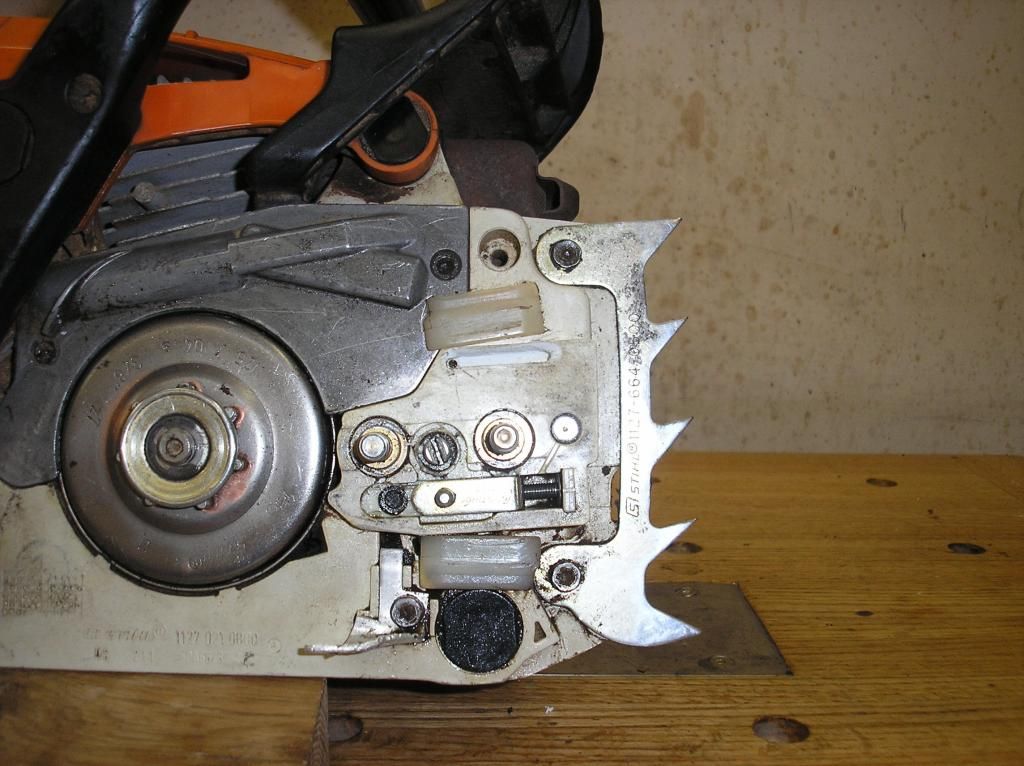hardpan
Addicted to ArboristSite
I think good oil flow is especially important when noodling. They are long cuts, the thickness of the wood is the same from start to finish, not as much soft bark and sapwood, and the heavy flow of wood chips/noodles probably cleans off the oil faster. 3/16" sounds like a sizable increase. Did it help a lot? I wonder if an angled drill hole in the direction with the chain movement would eliminate some of the "snagging" of saw dust as it shoots past the hole? I took off the oiler from my MS460 last night to install the HD version of pump and adjuster screw. Damn that is a little roll pin that secures the adjustment screw. I hate dry, crusty, hot chains and the wear that comes with it. Thanks Icehouse and Wood Doctor for you input, good stuff.







